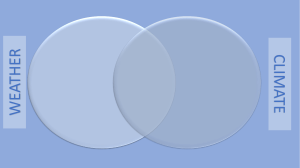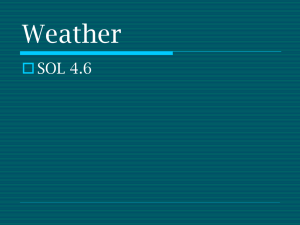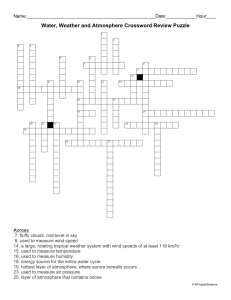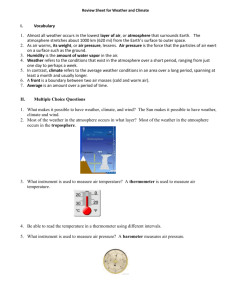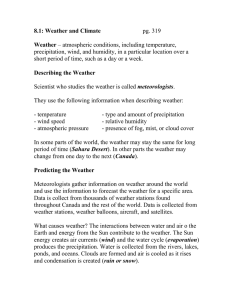air pressure - Bloomsburg Area School District
advertisement
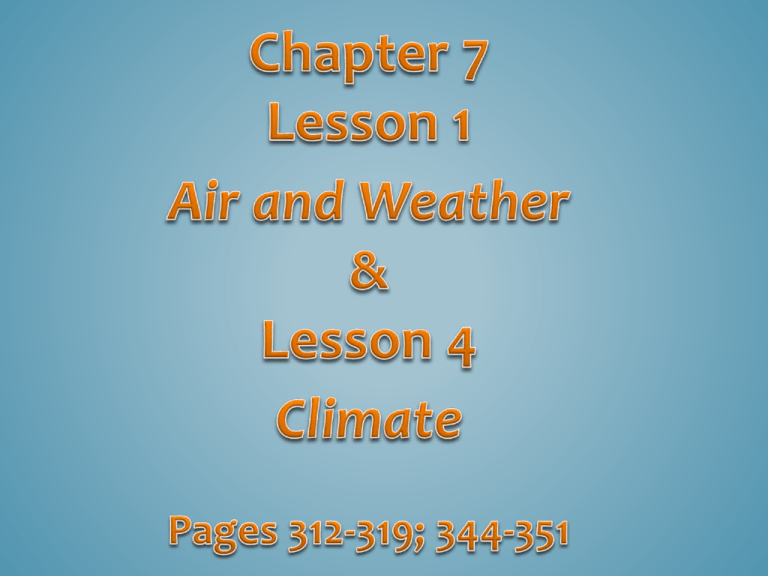
The Earth is surrounded by a thin blanket of air called the atmosphere. The atmosphere is a mix of several different gases like nitrogen, oxygen, carbon dioxide, and other. The atmosphere is made of several different layers. The troposphere is the layer closest to the Earth’s surface. All of Earth’s life exists in the troposphere. It is also where all of Earth’s weather takes place. Weather is the condition of the atmosphere at a given time and place. The four properties of weather are temperature, humidity, air pressure, and precipitation. Air has weight to it. The force of air pushing on an area is called air pressure. Temperature describes how hot or cold something is. The sun’s energy heats the Earth unevenly. The uneven heating of the Earth’s surface causes air to move at different speeds. This moving air is called wind. Cool air has higher air pressure than warmer air. (Cooler air weighs more than warmer air.) Air moves from an area of higher pressure to lower pressure. Humidity is a measure of how much moisture (water) is in the air. This moisture comes from evaporated water. Precipitation is any form of water that falls from clouds. This included rain, snow, sleet, and hail. Meteorologists, weather scientists, collect data from a place called a weather station. They use different kinds of tools to collect their data. A hygrometer is a tool that measures humidity. A thermometer measures air temperature in degrees Celsius (ºC) or degrees Fahrenheit (ºF). A barometer measures air pressure. A rain gauge is a tool that collects and shows the amount of rainfall. A wind vane point the direction from which the wind is blowing. An anemometer measures wind speed. Weather changes day to day, even hour to hour. But the pattern of seasonal weather that happens year after year is climate. Things that affect climate are latitude, global winds, ocean currents, distance from water, altitude, and clouds and precipitation.
